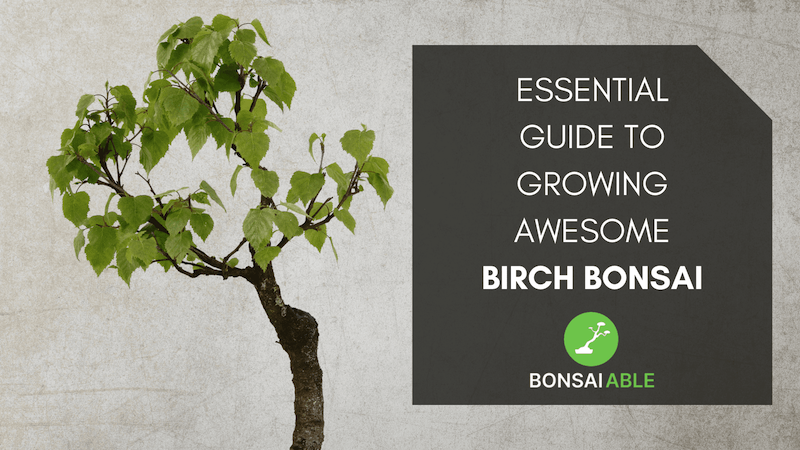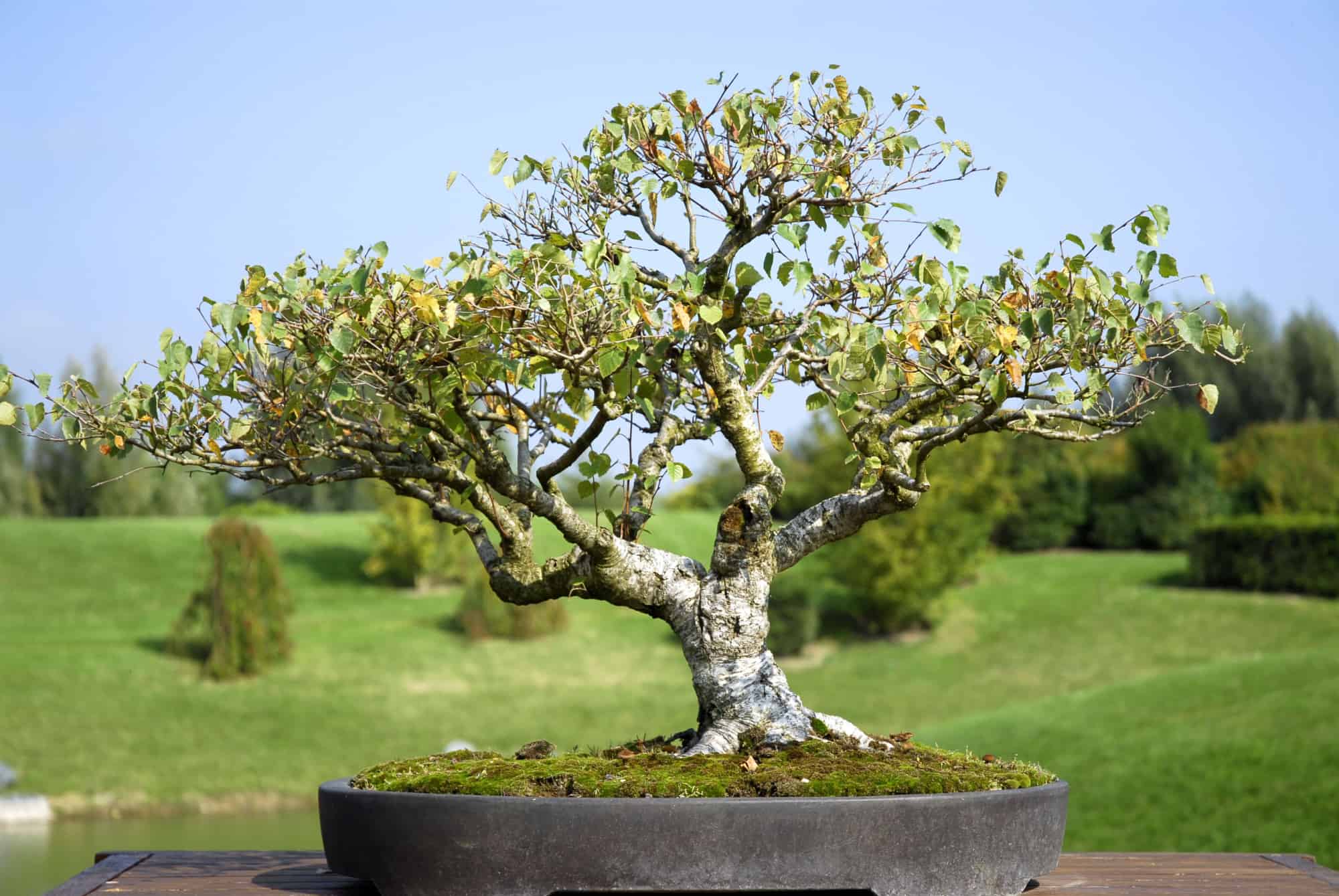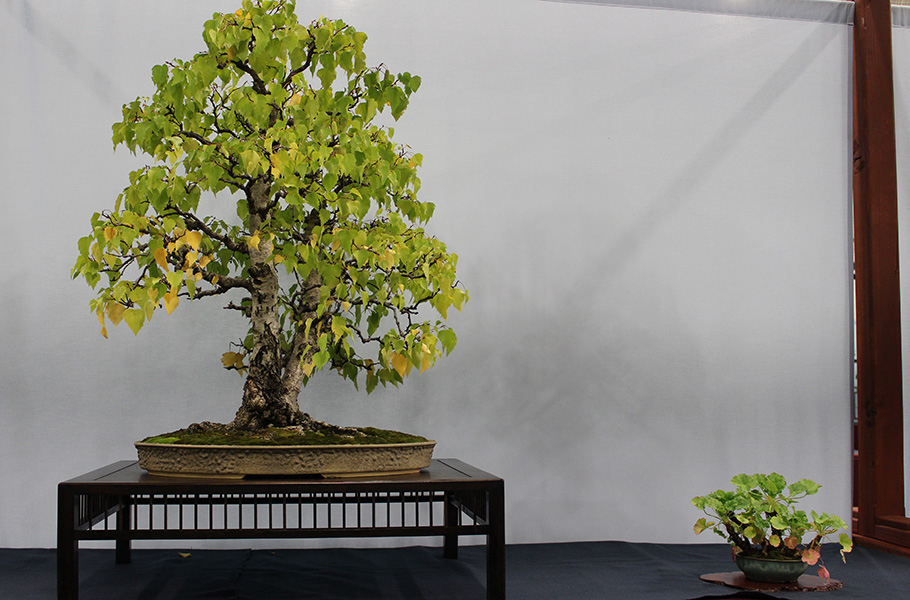River Birch bonsai trees require consistent watering and partial sunlight. Proper pruning and fertilization are essential for healthy growth.
River Birch bonsai trees, known for their stunning, peeling bark and delicate leaves, are a favorite among bonsai enthusiasts. These trees thrive with proper care, which includes consistent watering to maintain moist soil without waterlogging. Partial sunlight ensures they receive adequate light while avoiding excessive heat.
Pruning is crucial to shape the tree and promote healthy growth, while regular fertilization provides the necessary nutrients. Avoiding extreme temperatures and protecting the tree from harsh winds can help maintain its health. With the right care, a River Birch bonsai tree can flourish, offering a beautiful and serene addition to any bonsai collection.

Credit: www.bonsaiable.com
Introduction To River Birch Bonsai
The River Birch Bonsai is a beautiful small tree. It has peeling bark and delicate leaves. This tree grows well in many conditions. It is perfect for beginners and experts alike. River Birch Bonsai trees are known for their hardiness.
Unique Characteristics
River Birch trees have unique bark that peels off. Their leaves turn bright yellow in autumn. These trees are known to be very resilient. They can adapt to different soil types. The branches have a graceful, arching form.
Benefits Of Growing
Growing River Birch Bonsai is rewarding. It improves air quality. These trees also provide shade and reduce noise. Bonsai trees can be a relaxing hobby. They bring beauty to any space.
Choosing The Right Soil
River Birch Bonsai trees need specific soil. The soil must be well-draining. It should also retain some moisture. A mix of akadama, pumice, and lava rock works well. These elements provide needed nutrients. The soil should be slightly acidic. This helps the tree thrive.
Good drainage is crucial. It prevents the roots from rotting. Make sure the soil has air pockets. These pockets allow roots to breathe. Use a bonsai pot with drainage holes. This ensures excess water escapes. Healthy roots mean a healthy tree.
Watering Guidelines
Ensure the soil remains consistently moist for the River Birch Bonsai. Water thoroughly when the top inch feels dry. Avoid waterlogging to prevent root rot.
Frequency Of Watering
Water your River Birch Bonsai tree regularly. The soil should stay moist but not too wet. Check the soil daily during hot weather. Water the tree more often in summer and less in winter. Ensure the pot has proper drainage to avoid root rot.
Signs Of Overwatering
Overwatered bonsai trees show yellow leaves. Another sign is a moldy or musty smell from the soil. The leaves may wilt or fall off. Root rot can occur if the soil stays wet for too long. Always let the top layer of soil dry before watering again.
Ideal Light Conditions
The River Birch bonsai loves sunlight. Place it in a spot with full sun exposure. This tree needs at least six hours of direct sunlight each day. Morning sun is the best for it. Avoid placing it in complete shade. The leaves may lose their vibrant color without enough light.
Use grow lights if natural sunlight is scarce. LED grow lights work well for this purpose. Position the light about 6 to 12 inches above the tree. Keep the light on for 12 to 16 hours daily. Ensure the light covers all parts of the tree. This helps in healthy growth and vibrant leaves.
Pruning Techniques
Mastering pruning techniques is essential for maintaining a healthy River Birch bonsai tree. Regularly trim branches to encourage growth and shape the tree’s structure.
When To Prune
Prune your River Birch Bonsai in late winter. The tree is dormant during this time. Avoid pruning in late spring. The sap is rising, and the tree is more vulnerable. Pruning in summer can also be harmful. The heat can stress the tree. Winter pruning helps the tree heal faster.
Tools For Pruning
Use sharp, clean pruning shears. This ensures a clean cut. Dull tools can damage the tree. A pair of bonsai scissors is also useful. They are precise and easy to handle. For larger branches, use a small saw. Always disinfect your tools before use. This prevents disease spread.

Credit: a-z-animals.com
Fertilizing Your Bonsai
Organic fertilizers are natural and release nutrients slowly. They improve soil health. Chemical fertilizers give quick results but can harm soil over time. Liquid fertilizers mix with water and are easy to apply. Granular fertilizers are spread on the soil surface and work over time.
Spring is a good time to start fertilizing. Use a balanced fertilizer every two weeks. Summer needs less fertilizer. Apply once a month. Fall is for reducing fertilizer to prepare for winter. Stop fertilizing by mid-fall. Winter usually needs no fertilizer. The tree is resting.
Pest And Disease Management
Aphids, spider mites, and scale insects are common pests. These pests can damage the River Birch Bonsai. Look for tiny bugs on leaves and branches. Check for sticky residue, which can indicate pest presence. Ants often follow aphids. Use a magnifying glass to spot small pests.
Keep the bonsai clean and free of debris. Trim dead or diseased leaves. Water correctly to avoid mold and mildew. Use a gentle pesticide spray if pests appear. Neem oil is a good natural option. Ensure good air circulation around the tree. Regularly inspect the tree for early signs of pests.

Credit: www.bonsaiempire.com
Winter Care Tips
Frost can harm your River Birch Bonsai. Wrap the bonsai in burlap to keep it warm. Place the tree in a sheltered spot. Avoid direct wind exposure. Check the weather regularly. Move the bonsai indoors if temperatures drop too low. Use a frost blanket for extra protection. Ensure the tree is not in a heated room. This could cause it to wake from dormancy.
Watering needs change during winter. Reduce watering as the tree’s growth slows down. Water only when the soil is dry. Avoid overwatering to prevent root rot. Feeding should also be adjusted. Stop fertilizing during the cold months. Resume feeding in spring when growth starts again. Use a balanced fertilizer for the best results.
Repotting Your Bonsai
Ensure proper growth by repotting your River Birch Bonsai tree every two years. Use well-draining soil to prevent root rot. Trim roots carefully to maintain a healthy bonsai structure.
When To Repot
Repotting a River Birch bonsai should be done every two years. Spring is the best time for repotting. The tree is in its growing phase. Repotting helps the tree grow better. It prevents roots from becoming pot-bound. Always check the root system before repotting. Healthy roots are important for a healthy bonsai.
Steps To Repotting
- Remove the bonsai from its pot gently.
- Trim about one-third of the roots.
- Place a mesh over the drainage holes.
- Add a layer of fresh soil to the pot.
- Position the tree in the center of the pot.
- Fill the pot with more soil, covering the roots.
- Water the bonsai thoroughly after repotting.
Conclusion
Caring for a River Birch Bonsai Tree can be rewarding and straightforward. With proper attention, your bonsai will thrive. Remember to water regularly, provide adequate sunlight, and prune as needed. These small steps ensure a healthy, beautiful tree. Embrace the joy of bonsai cultivation and watch your tree flourish.

